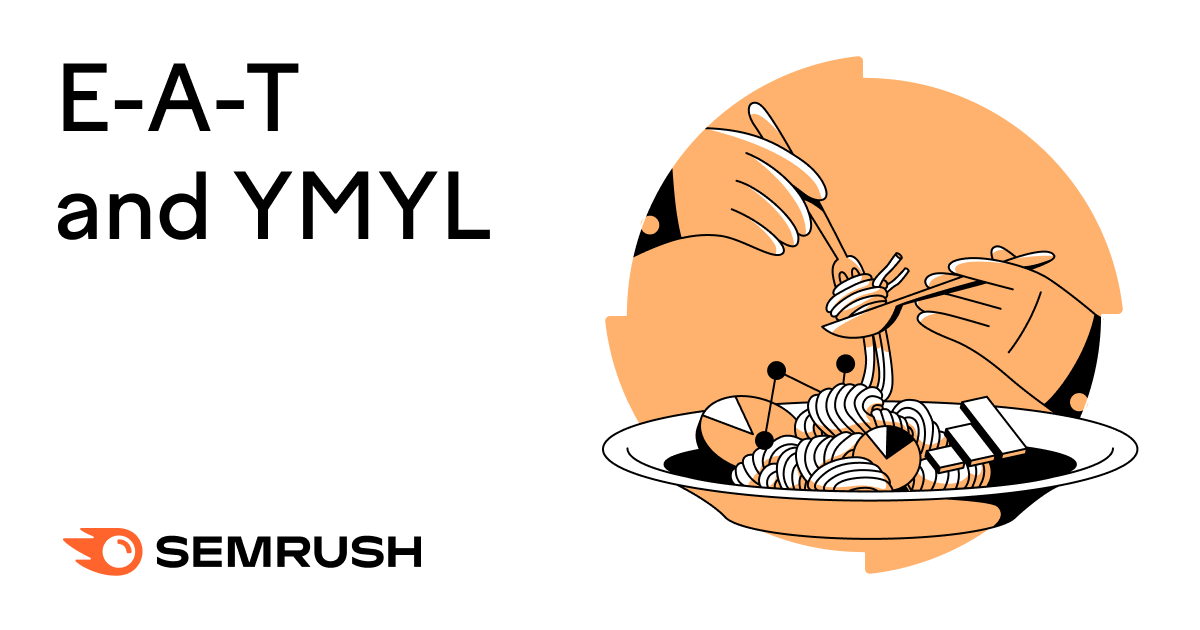E-A-T stands for “Expertise, Authoritativeness, and Trustworthiness.”
YMYL stands for “Your Money or Your Life.”
Google references both concepts heavily in their Search Quality Rater Guidelines. Which is a document that real people from around the world use to evaluate the effectiveness of search results.
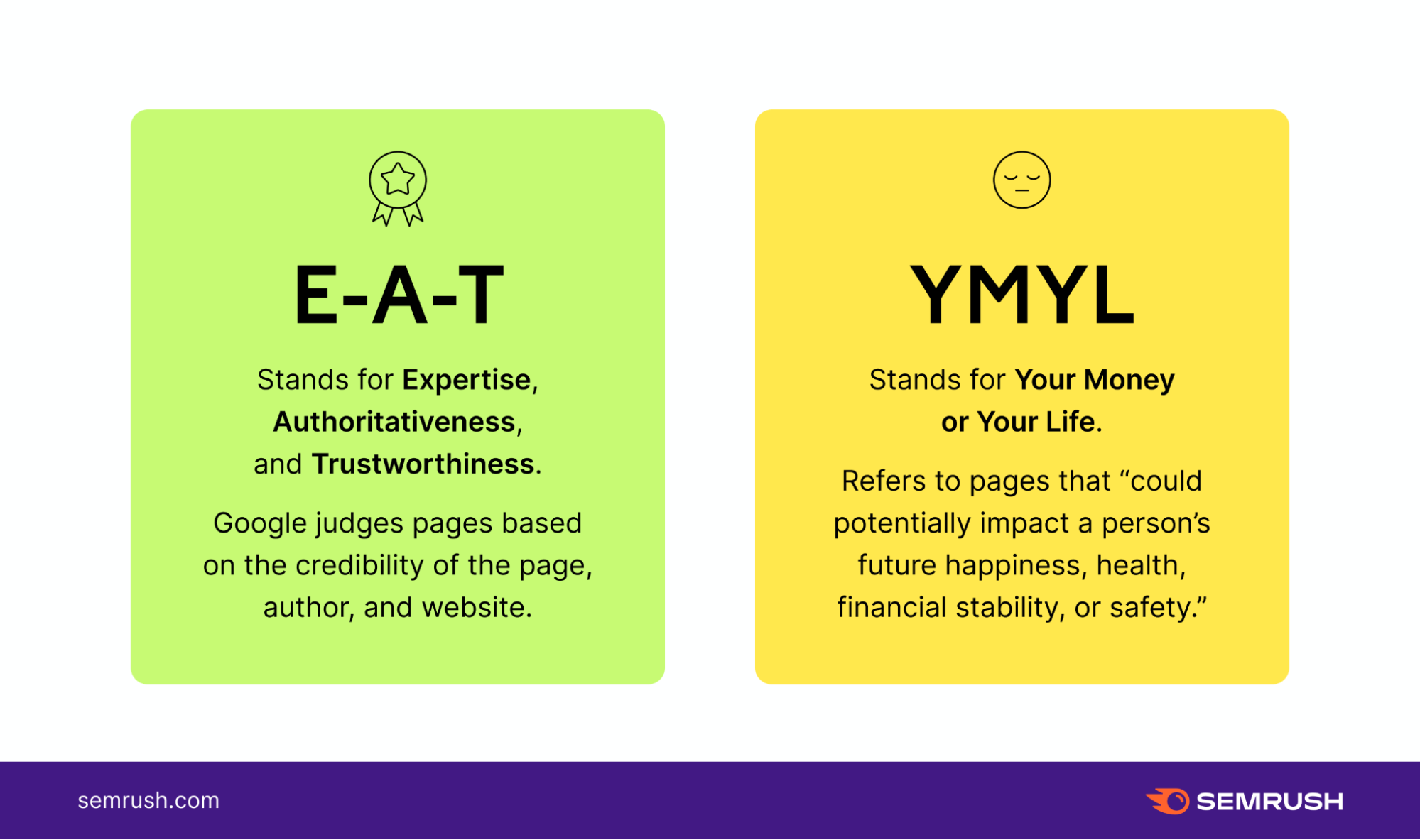
In this article, we’ll further define E-A-T and YMYL. And show you how to improve your site’s E-A-T so your content meets users’ needs and ranks higher.
Let’s start with E-A-T.
What Is E-A-T?
E-A-T—Expertise, Authoritativeness, and Trustworthiness—is a principle Google’s search quality raters use to determine the quality and effectiveness of search results.
Quality raters are real people who determine how well Google’s search results meet users’ needs based on the Search Quality Rater Guidelines.
Feedback from quality raters doesn’t directly impact rankings. But it does help Google make algorithm improvements over time.
So while E-A-T is not a direct Google ranking factor, it still goes hand-in-hand with SEO.
Google introduced the guidelines in 2014 and has made updates roughly once a year since.
The May 2019 Search Quality Rater Guidelines update slightly changed the importance of E-A-T. Now, it is one factor in determining Page Quality, rather than a synonym for Page Quality.

Now let’s dive into the three components of E-A-T and how they intersect with your content.
Expertise
To determine expertise, search quality raters review the creator of the Main Content (MC) of a page. Is the author an expert on the topic? Do they have the expertise, qualifications, and credentials?
Quality raters also evaluate for “everyday expertise,” which means someone is well-versed in a topic without necessarily having expert credentials.
Everyday expertise could refer to a food blogger who provides thorough, useful reviews for restaurants, which requires less formal expertise or education.
Or, forum participants sharing stories about loved ones living with liver cancer. (Google uses this as an example of everyday expertise in its forum.)
Similarly, this thread on Reddit features people sharing their cancer experiences.
They’ve amassed expertise because they’ve been through it, but it’s not considered legitimate medical advice.
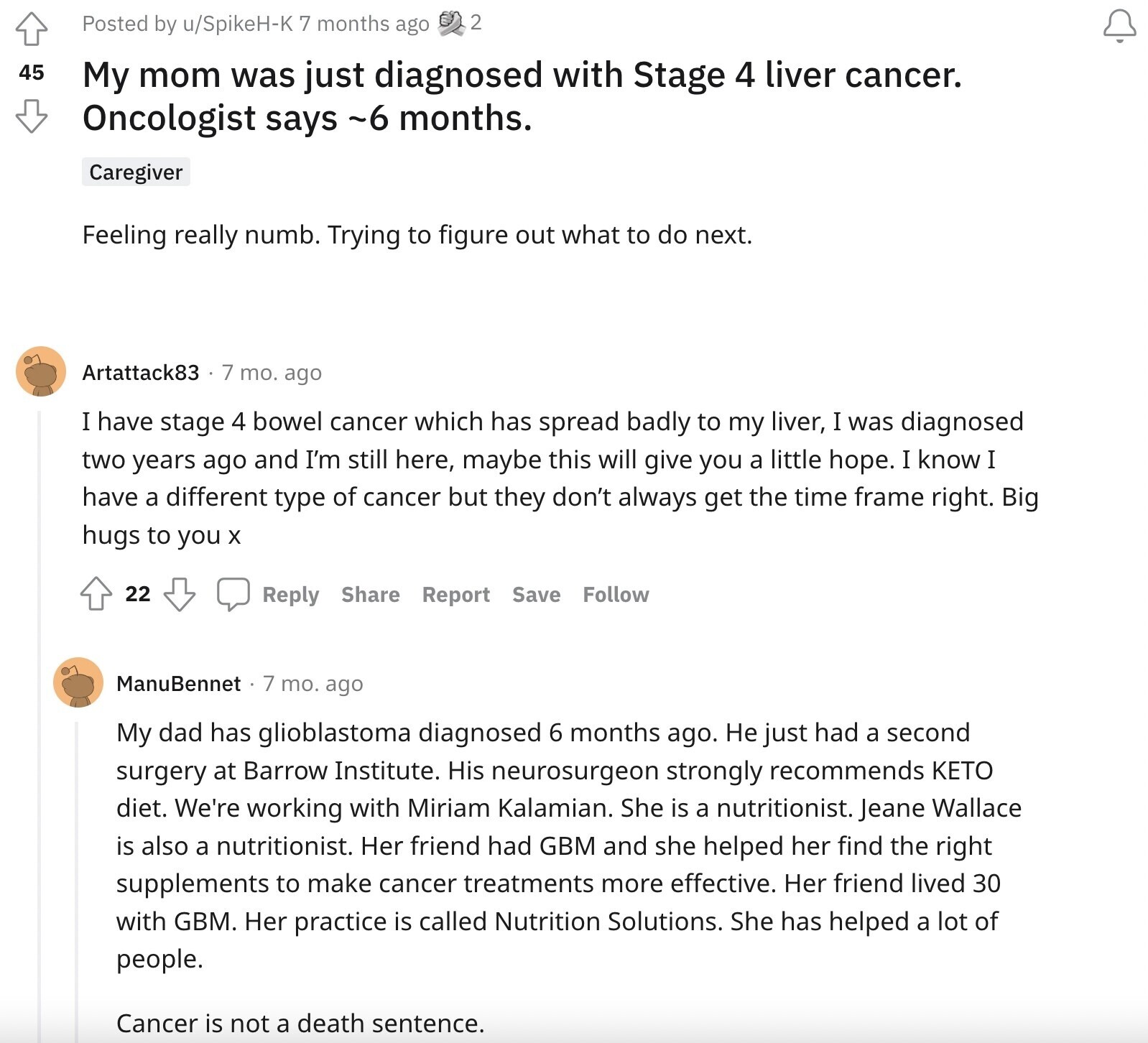
If people without medical degrees posted unsubstantiated medical advice on those same forums, they would not be considered experts.
While Google has stricter rules when it comes to YMYL content, they still expect “everyday expertise” for non-YMYL content.
Authoritativeness
Authoritativeness refers to your overall reputation in your industry. Especially among experts and influencers in your niche.
Google quality raters are instructed to review the authoritativeness of the creator of the MC, the MC itself, and the website.
For example, an article on abdominal pain from WebMD is authoritative because:
- WebMD is a well-known publication for medical advice
- The authors—WebMD Editorial Contributors—are wellness professionals
- They ask an expert (usually a doctor) to check their content for accuracy
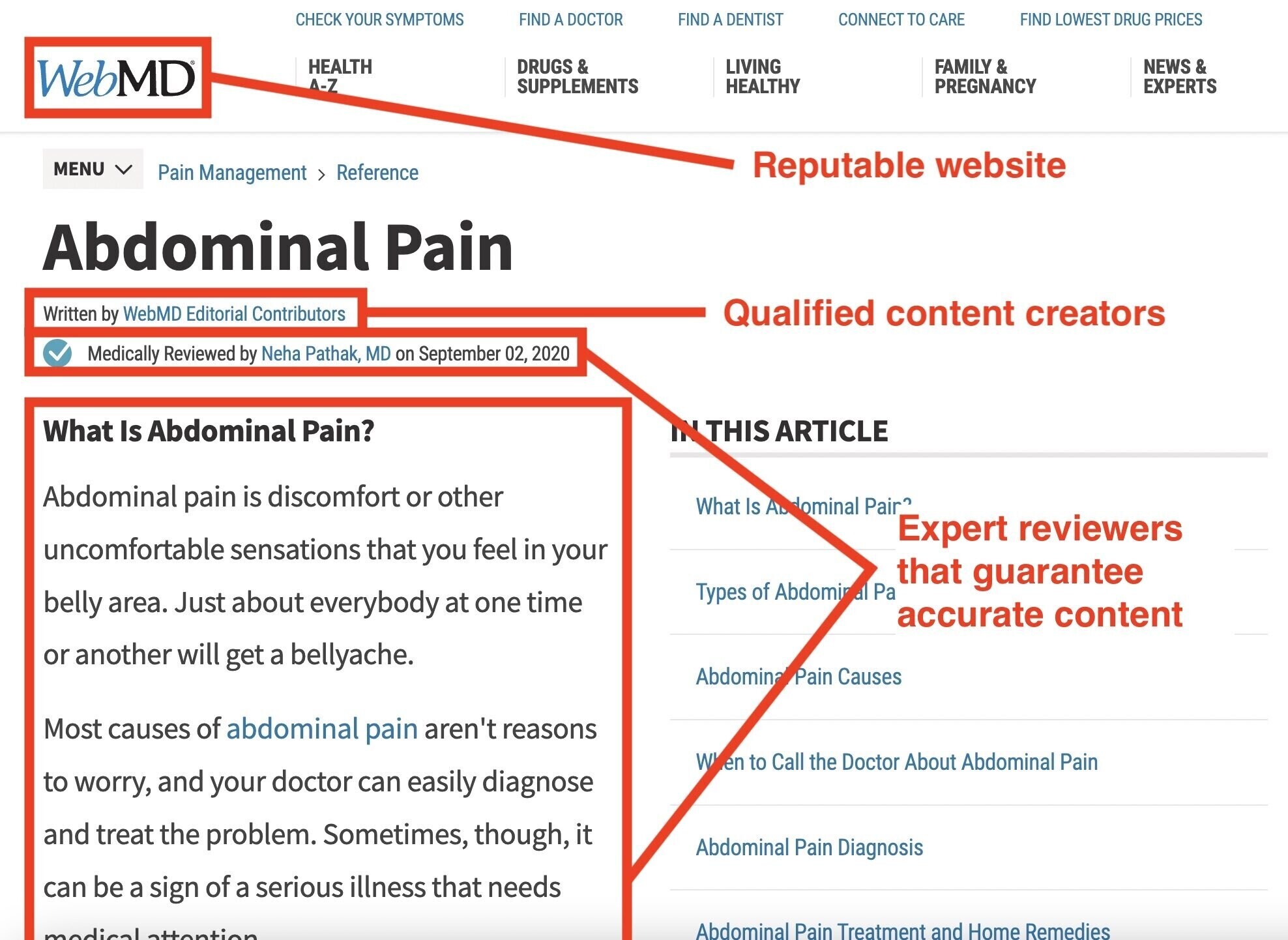
Ideally, other authorities in your industry link to your content because it provides value.
In other words, people know you, know your background, and look to you as a leader in your industry. They accept you as a good source of information.
Trustworthiness
Quality raters also review the creator of the MC, the MC itself, and the website to gauge trustworthiness.
Be clear about who wrote your content, edit for factual accuracy, cite trustworthy sources, and avoid hiding content behind a wall of ads.
Keep in mind that this encompasses more than just content, though.
In section 6.1 of the Quality Rater Guidelines, Google refers to “a shopping checkout page that has an insecure connection” as untrustworthy.
See here how Pashion lets its consumers know that all transactions are secure and encrypted to build trust:
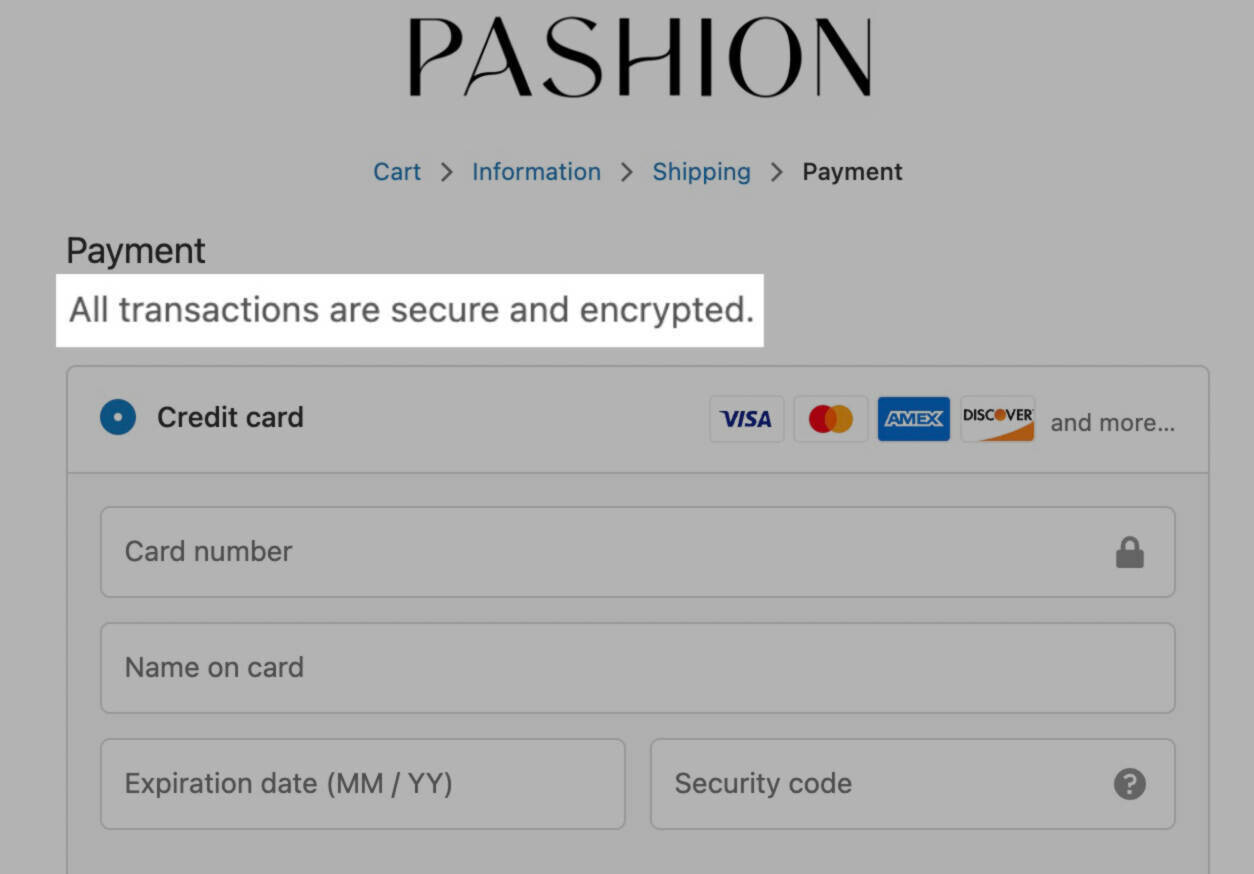
It’s also important to provide contact information on your website—particularly for YMYL topics or online stores.
What Is YMYL (Your Money or Your Life)?
YMYL topics could significantly impact readers’ health, financial stability, safety, or well-being. Common YMYL topics include finance, medicine, and current events.
E-A-T is important for YMYL sites because misinformation on such topics can cause harm to users.
According to section 2.3 of the Quality Rater Guidelines, YMYL topics can cause harm to the following groups:
- The person viewing the content
- Others affected by the person who viewed the content
- Groups of people affected by the actions of those who viewed the content
In the July 2022 update of the guidelines, Google clarified which topics fall under the YMYL umbrella.
They also highlighted the importance of Page Quality—and, thus, E-A-T—when it comes to YMYL topics.
See page 12 of the Quality Rater Guidelines to see what Google considers YMYL (or not). Here are a few examples:
- Clear YMYL topics: evacuation routes for a tsunami, news about ongoing violence, information about purchasing prescription drugs
- Possible YMYL topics: the weather forecast, news about a car accident, information about how often to replace a toothbrush
- Unlikely YMYL topics: music award winners, news about a local high school basketball game, a music video
There are plenty of other YMYL topics. But Google says quality evaluators need to use their judgment to determine whether a page qualifies as YMYL content. These pages need to demonstrate the highest levels of E-A-T.
So while E-A-T and YMYL aren’t SEO ranking factors, they are important things to consider when creating quality content.
Which Google considers tremendously important.
Having trouble determining whether a topic falls under the YMYL category?
In the Quality Rater Guidelines, Google recommends asking yourself these questions:
- Would someone seek out experts on this topic to prevent harm, and would inaccuracies cause harm? If so, the topic is probably YMYL.
- Would most people be content with only consulting friends casually about this topic? If so, it’s probably not YMYL.
How to Improve Your Site’s E-A-T
The good news is that you don’t need to overhaul your SEO strategy to improve your E-A-T and take YMYL into consideration.
Let’s uncover six practical steps to improve your site’s E-A-T:
1. Create High-Quality Content
Your site should provide people-first content. This means content that answers questions, provides advice, and leaves the reader feeling satisfied.
Google doubled down on this in the “Helpful Content Update” released in August 2022.
The focus of the update is to ensure content is:
- Original
- Helpful to users
- Written by people, for people
Regularly audit your content to ensure that it’s useful and has a high level of E-A-T. Even if your content was once useful, it won’t be that helpful if it has outdated information.
To perform a content audit, you’ll need to review all of your current pages and determine whether you should update, delete, or combine them.
Our Content Audit Tool can automate the process. Here’s how to use it.
First, enter your website into the tool’s search bar. And hit “Start Audit”.
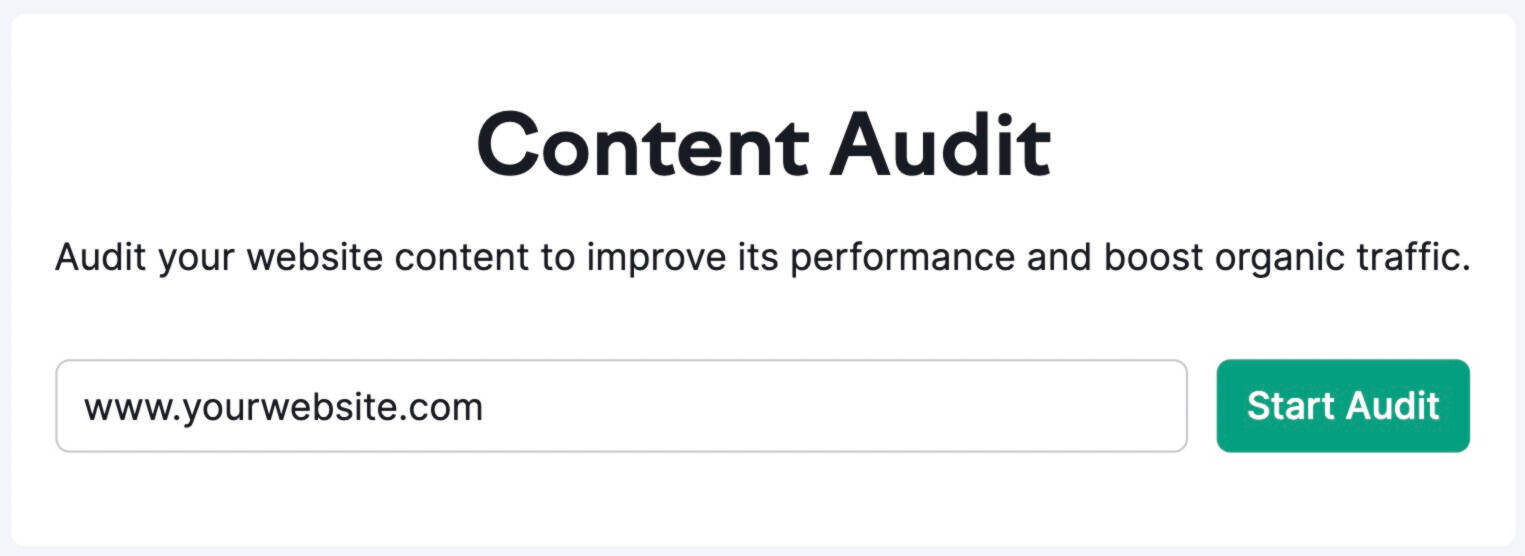
Then, select which pages you want to audit. For this example, we want to audit our blog articles. So we chose “/blogs.”
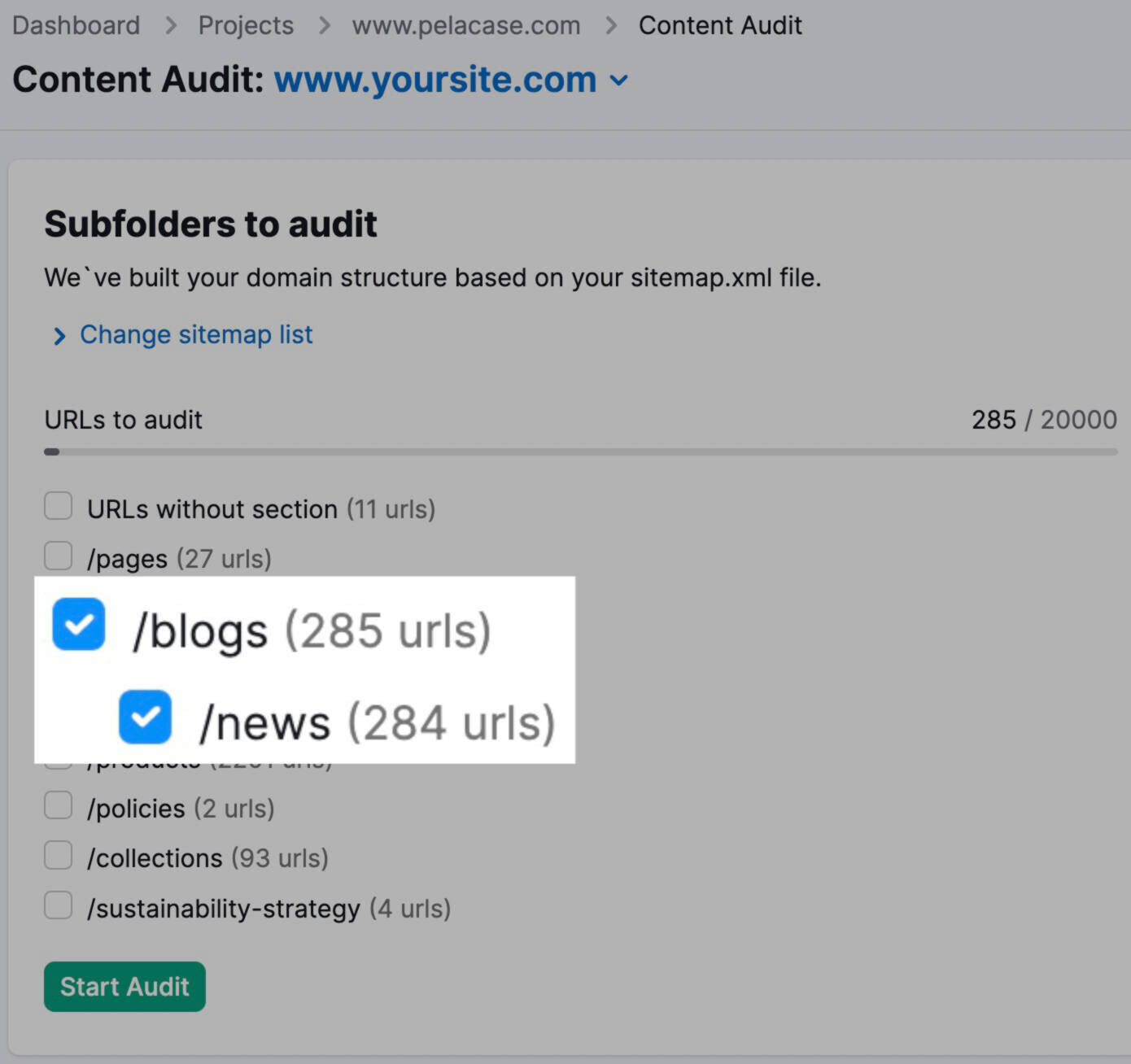
After you hit enter, the tool will start analyzing your pages. And then generate a table of the pages that you need to rewrite or remove, update, review, or improve.
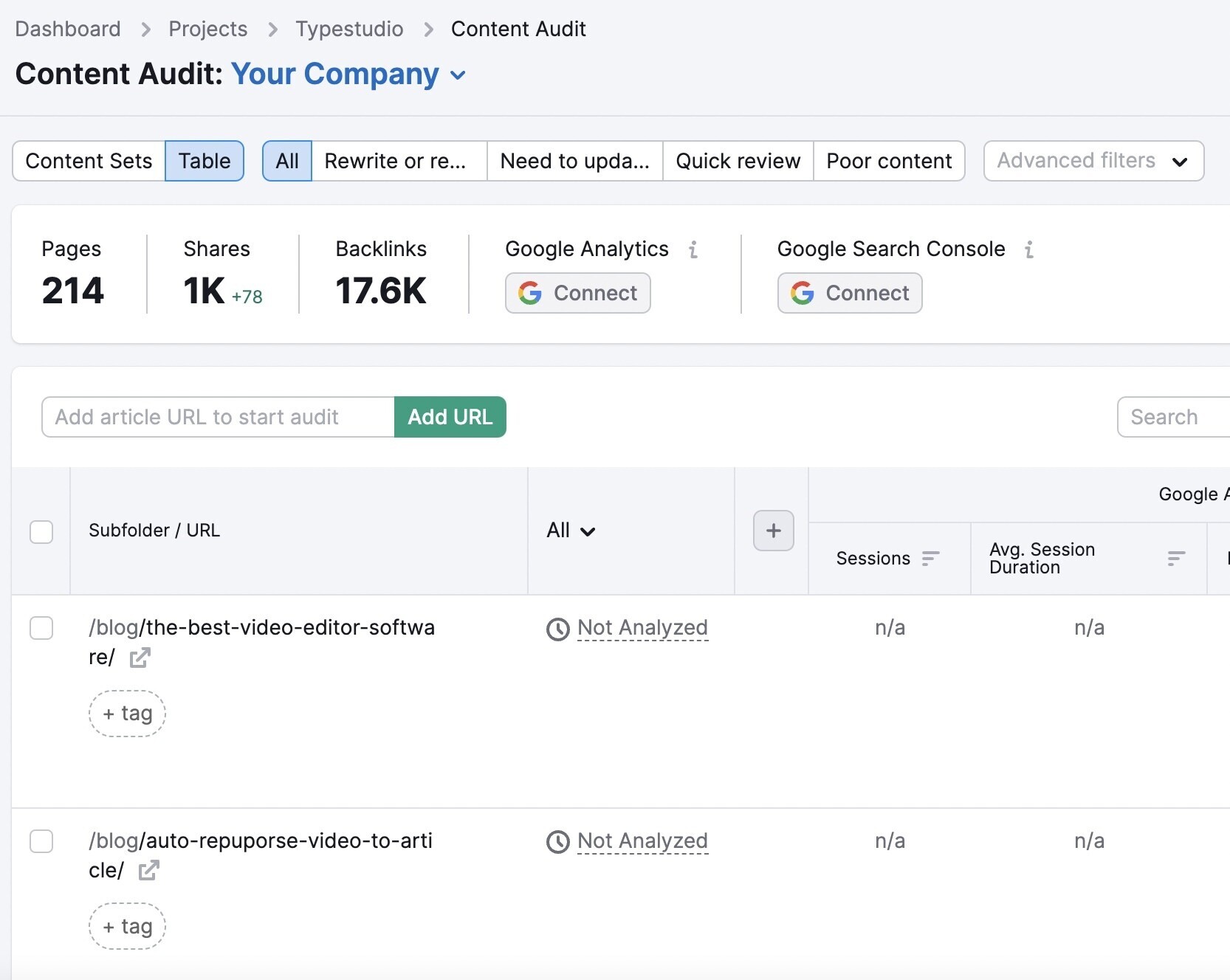
After auditing your content, take action. Using your results, adjust your content strategy and determine which pages to add or update first.
To learn more about performing a detailed content audit, read our in-depth guide.
2. Provide Author Info & Transparency
Google wants to know that the person writing a piece of content is a legitimate source of information.
Be sure to create an About Us page to introduce your team (if applicable). And individual author pages to highlight specific writers.
Author pages help establish transparency and E-A-T by showing author credentials and past work:
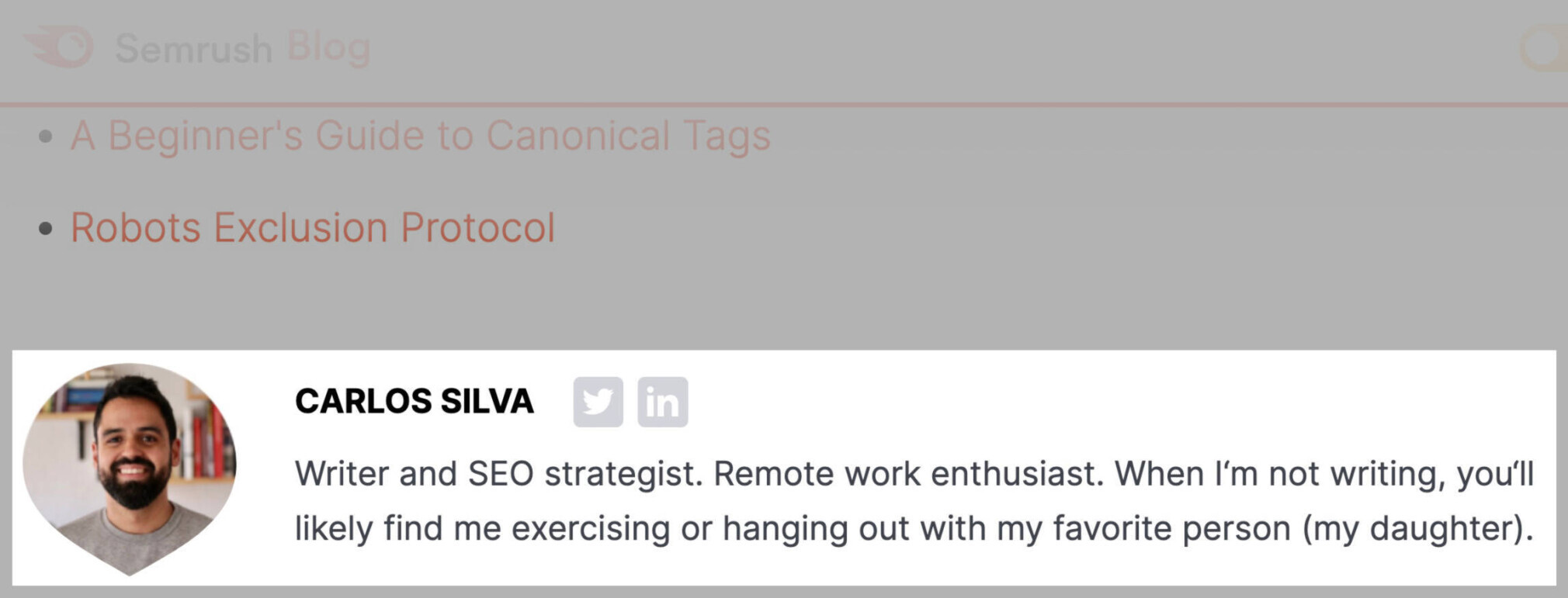
You can also leverage author expertise by becoming a contributor to authoritative sites in your space.
This is easier said than done. But a great way to start is by guest posting on relevant, authoritative sites within your niche.
Lastly, hire experts when you can. If you’re a small business owner or don’t have the funds to do so, at the very least, hire talented writers who do their research to create informative content.
Pro tip: Have subject matter experts review your writers’ content. This will help you establish credibility and avoid any mistakes or misinformation.
For example, your finance team may not necessarily have the skills to create content. But they can review finance-related articles for accuracy or provide quotes.
This brings us to our next point:
3. Use Credible Sources
When creating content, it’s always best to go straight to the source to establish credibility.
Always link to official sources, studies, research papers, etc. This can even include tweets and blogs by experts in your field.
It’s also best to use trusted sources. These may vary by field but could include academic databases, news publications, or established experts’ and agencies’ sites.
4. Create a Positive Brand Reputation
Your brand’s reputation can impact the trustworthiness of your content and site overall.
This means you should keep an eye out for negative reviews or press. If something does come up, respond promptly and professionally.
An easy way to stay on top of your reviews is through our Listing Management tool. Simply enter your business name into the tool to see your reviews on different platforms.
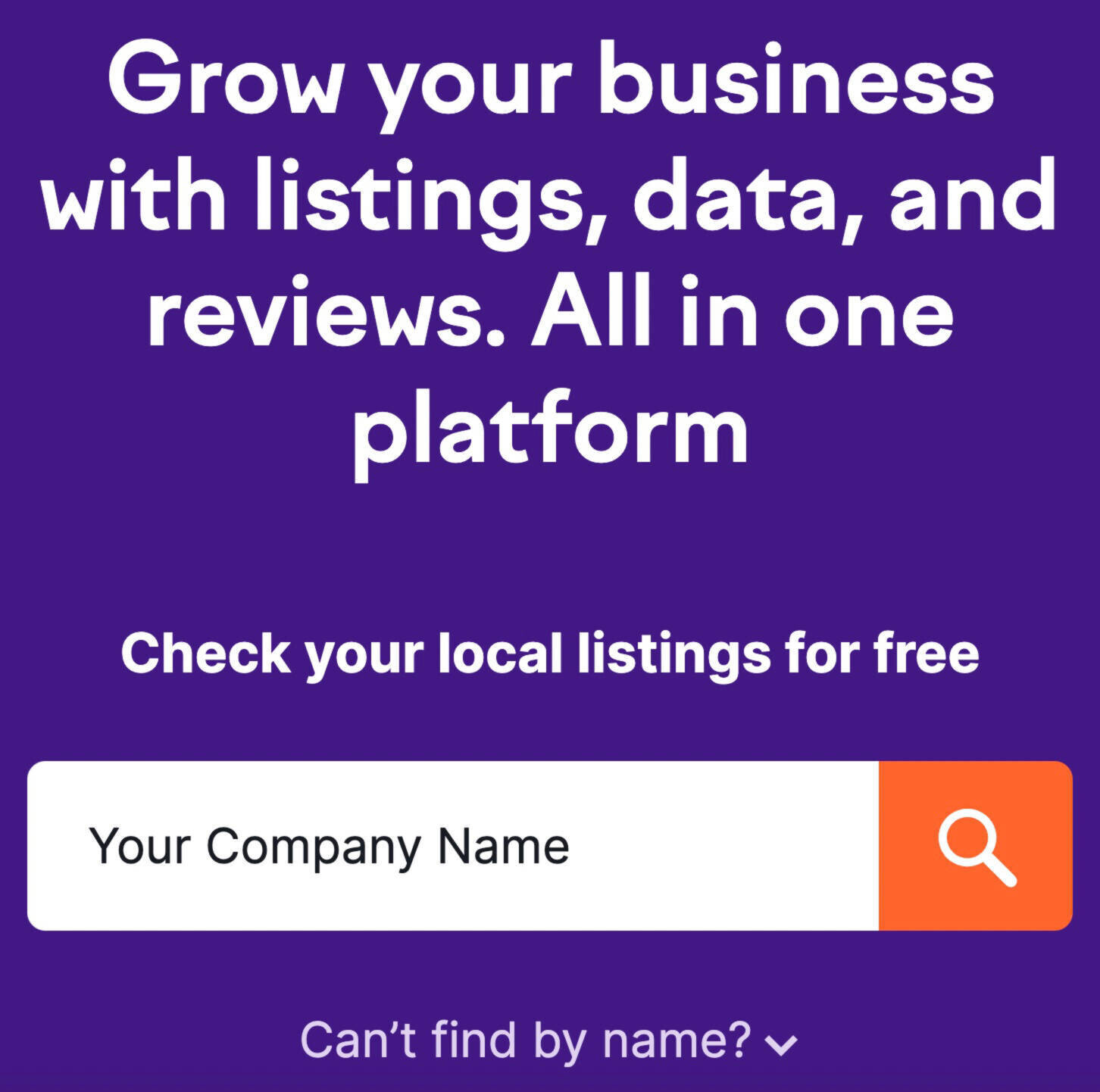
To reply to reviews, go into the “Review Management” tab of the tool.
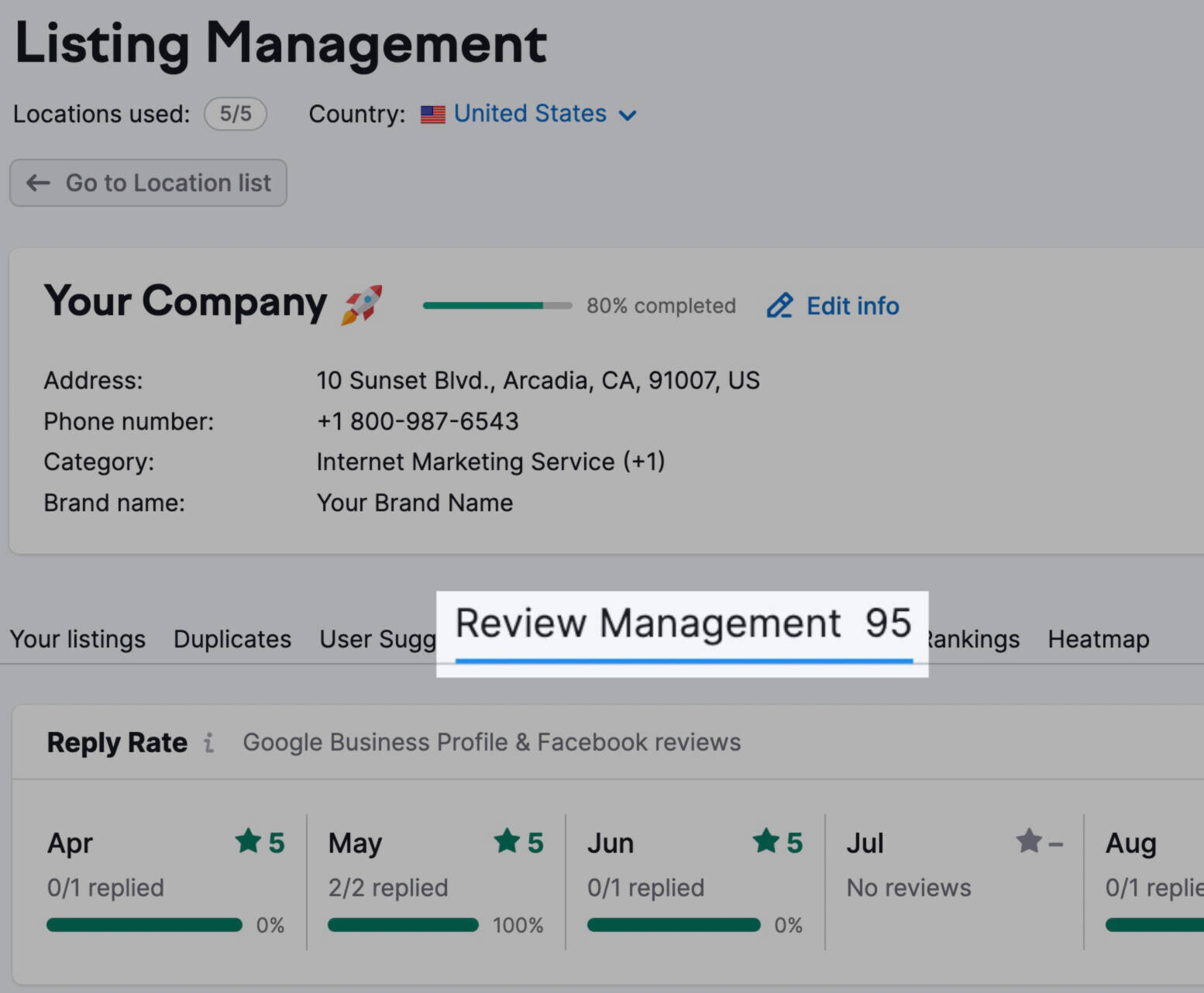
Scroll down to find the “Reviews” table and respond to reviews, as necessary.
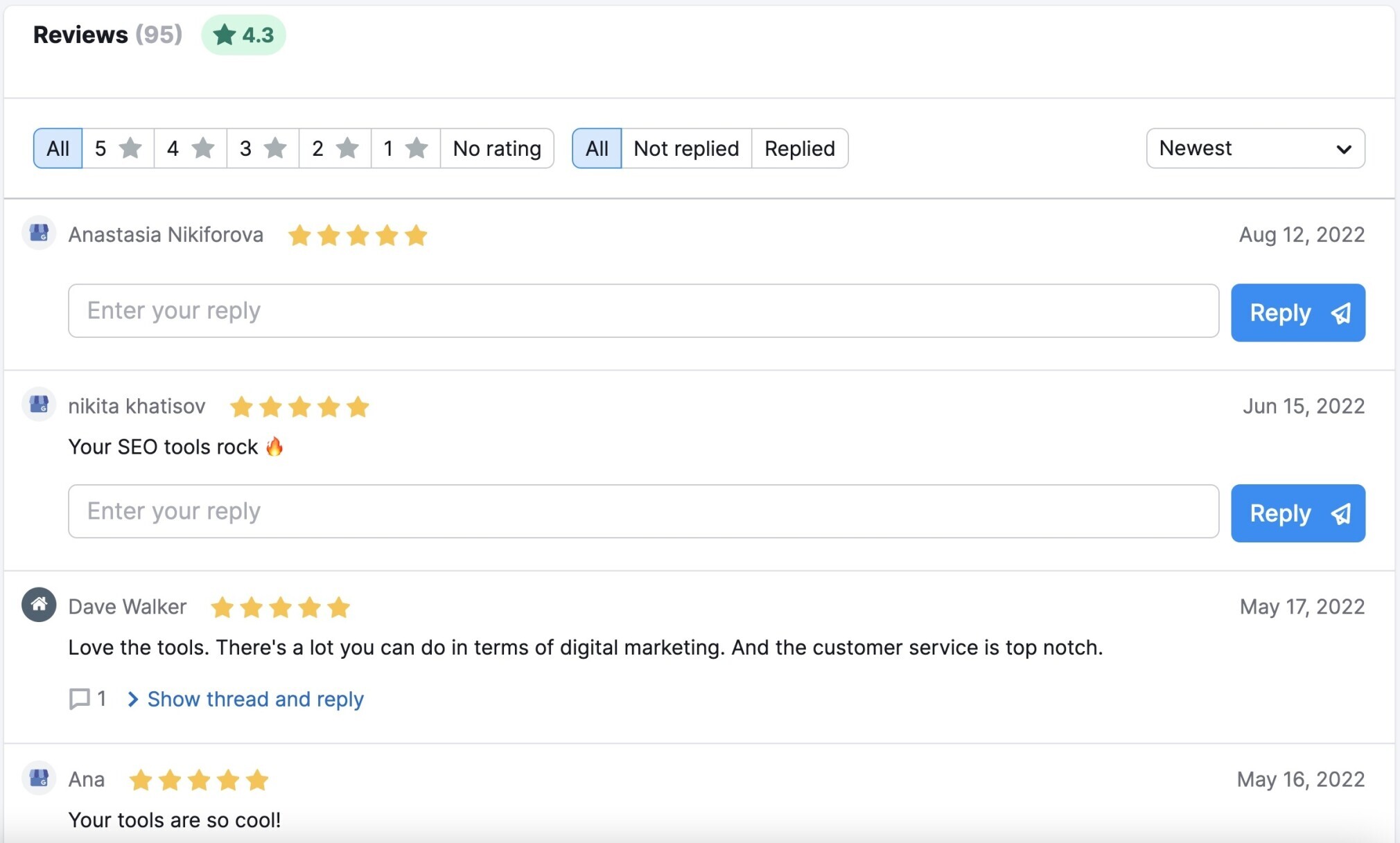
Pro tip: Don’t forget to respond to the good reviews, too. Positive interactions with customers can help your brand reputation over the long term.
Also, claim your brand name on all social media sites. Even if you mainly stick to a few sites, you don’t want someone else to take the handle and paint a poor picture of your brand name.
5. Monitor & Leverage User-Generated Content
User-generated content (UGC) is any type of content created by consumers or website users rather than brands. When used well, UGC content can act as a trust signal and establish brand loyalty.
For example, 79% of online shoppers say UGC highly impacts their purchasing decisions. So it’s crucial to get your customer base to back your brand.
UGC includes images, video testimonials, product reviews, YouTube videos, blog posts, etc.
This Instagram video by Whitney Anderson about her Pashion Footwear shoes is a great example of UGC.

According to Google’s Search Quality Rater Guidelines, UGC is considered MC (Main Content), which is “any part of the page that directly helps the page achieve its purpose.”

The guidelines state that any content on a webpage can be categorized into three areas: MC, Supplementary Content (SC), and Advertisements/Monetization (Ads).
So MC—which can include UGC—is clearly an important part of the picture.
One way you can gather UGC to improve your site’s E-A-T is to prompt happy customers to share photos of your product and tag you.
You can prompt customers to post about you on social platforms by sending them a quick email or running a social media contest.
Here’s an example of an email that asks customers to tag them on social media using hashtags:
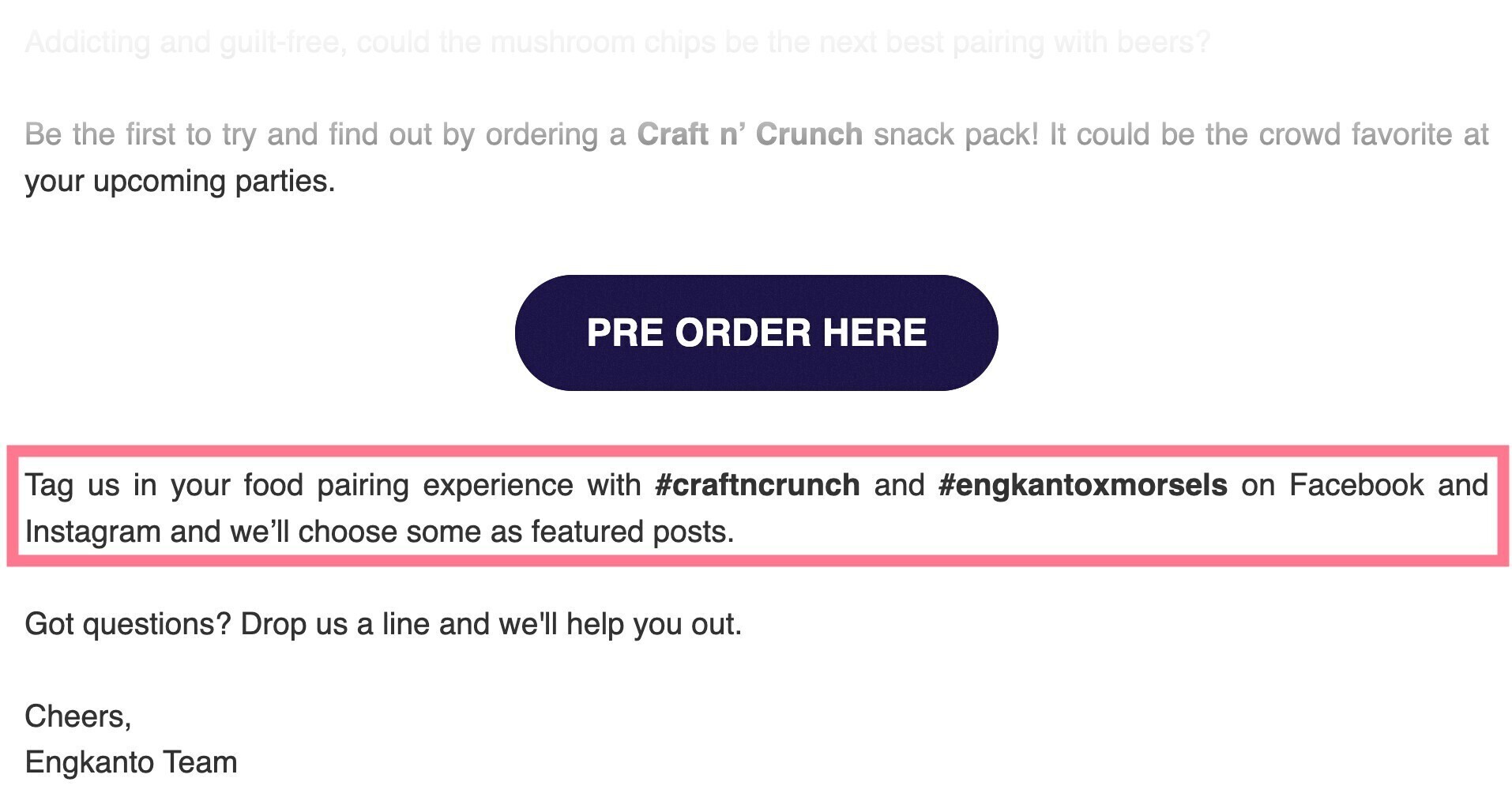
And here’s an example of a contest run by a small jewelry shop. It asks customers to tag the shop in their Instagram stories:

Asking customers (and potential customers) to post about you gets you more exposure. And asking them to tag you gives you a whole folder of user-generated content that you can share on your own feeds.
For example, this is how Spanx re-shares content made by their customers:

Other ways you can leverage UGC to improve your site’s E-A-T are:
- Strategically using hashtags to easily sort through fan photos later
- Running contests or giveaways that require users to engage and share content
- Regularly engaging with fans to promote conversation
- Running influencer marketing campaigns
Whenever you highlight UGC on your site or social profiles, always request permission from creators. (And credit them in the content.)
And remember:
Getting quality UGC is about the long game. Engage with your audience on a regular basis to encourage them to interact with your brand and with each other.
6. Build Authoritative Backlinks
Earning backlinks from other trusted sites is an important part of your SEO strategy. Plus, it can show that your business is an authority in your industry.
Take this example from World Wildlife Fund:
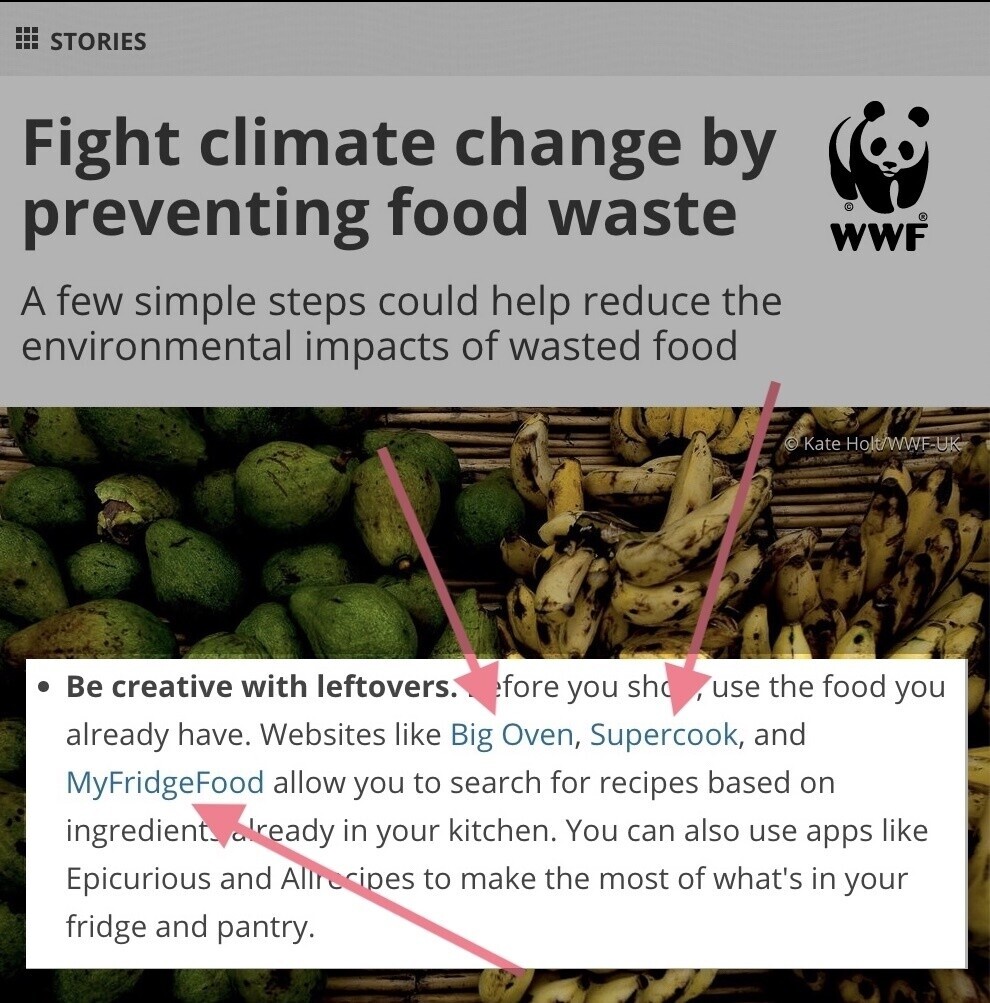
They link to a number of smaller sites. And the World Wildlife Fund is a global authority. So earning a backlink from them is like getting a stamp of approval within their niche.
Think of backlinks like word of mouth. You’d probably be more likely to trust a brand recommended by a friend.
Similarly, you may be more willing to trust a site recommended by another site you trust.
The other great part about backlinks? They’re a critical part of any SEO strategy. As a general rule, the more high-quality backlinks you earn, the better off you are in Google search rankings.
There are many ways to earn backlinks. But a good start is simply creating great, useful content.
Here are a few specific things you can do to optimize with link building in mind:
- Create linkable content assets (e.g., helpful infographics or video guides)
- Share visuals or compelling data on social media (and always include links to your articles on those posts)
- Publish original research that people might want to cite and link to
- Create helpful how-to guides for topics in your niche
Once you create your linkable content, reach out to other publications to see if they are interested in linking to your piece.
You can also utilize the broken link building strategy or use a tool like Backlink Gap to find sites that are linking to your competitors (but not to you).
First, identify up to four competitors you want to compare your site with.
Then, plug your site and your competitors’ sites into the Backlink Gap tool.
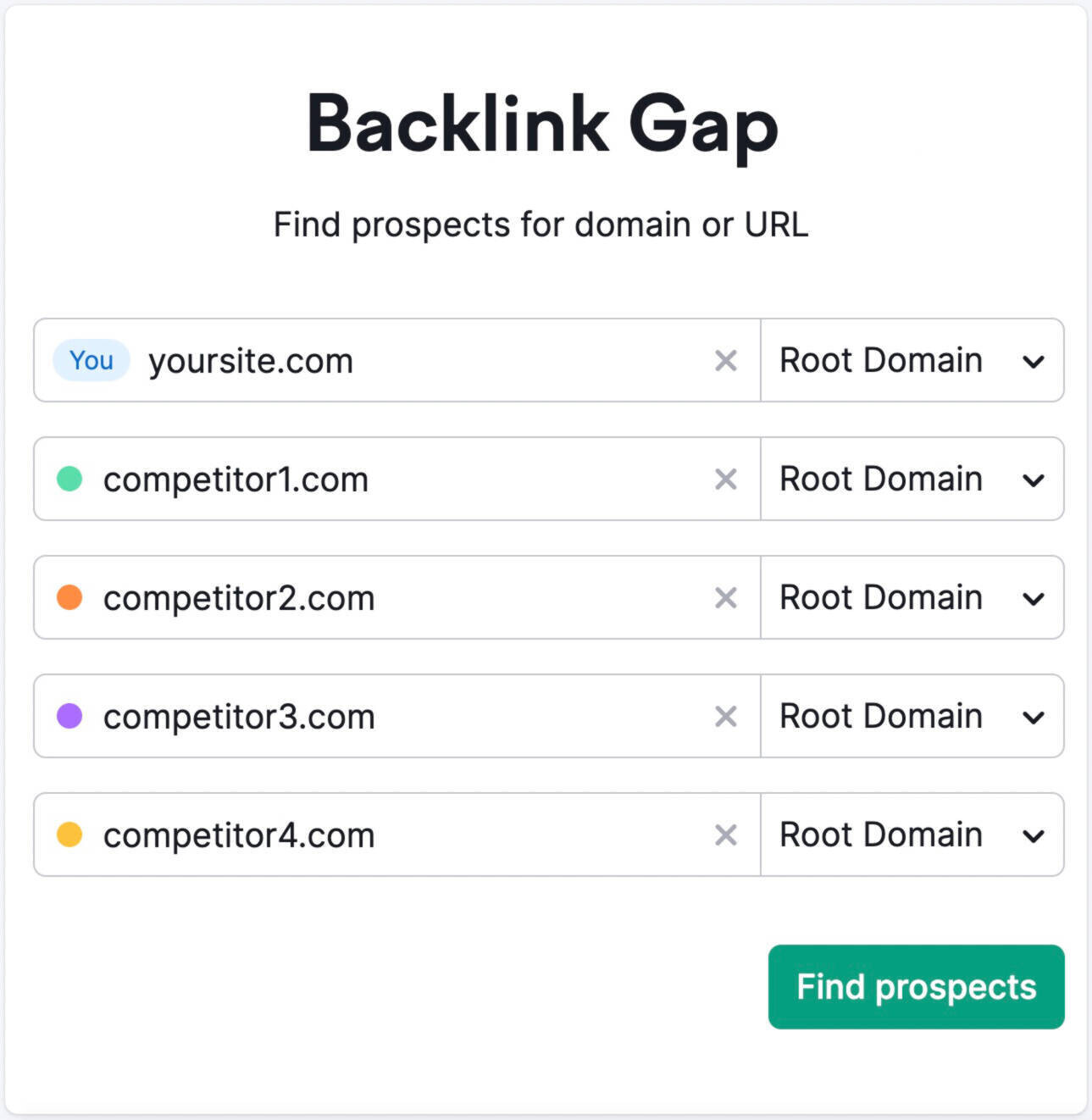
After you hit the “Find prospects” button, you’ll see a table with a list of publications that link to your competitors. And how many times they do so.
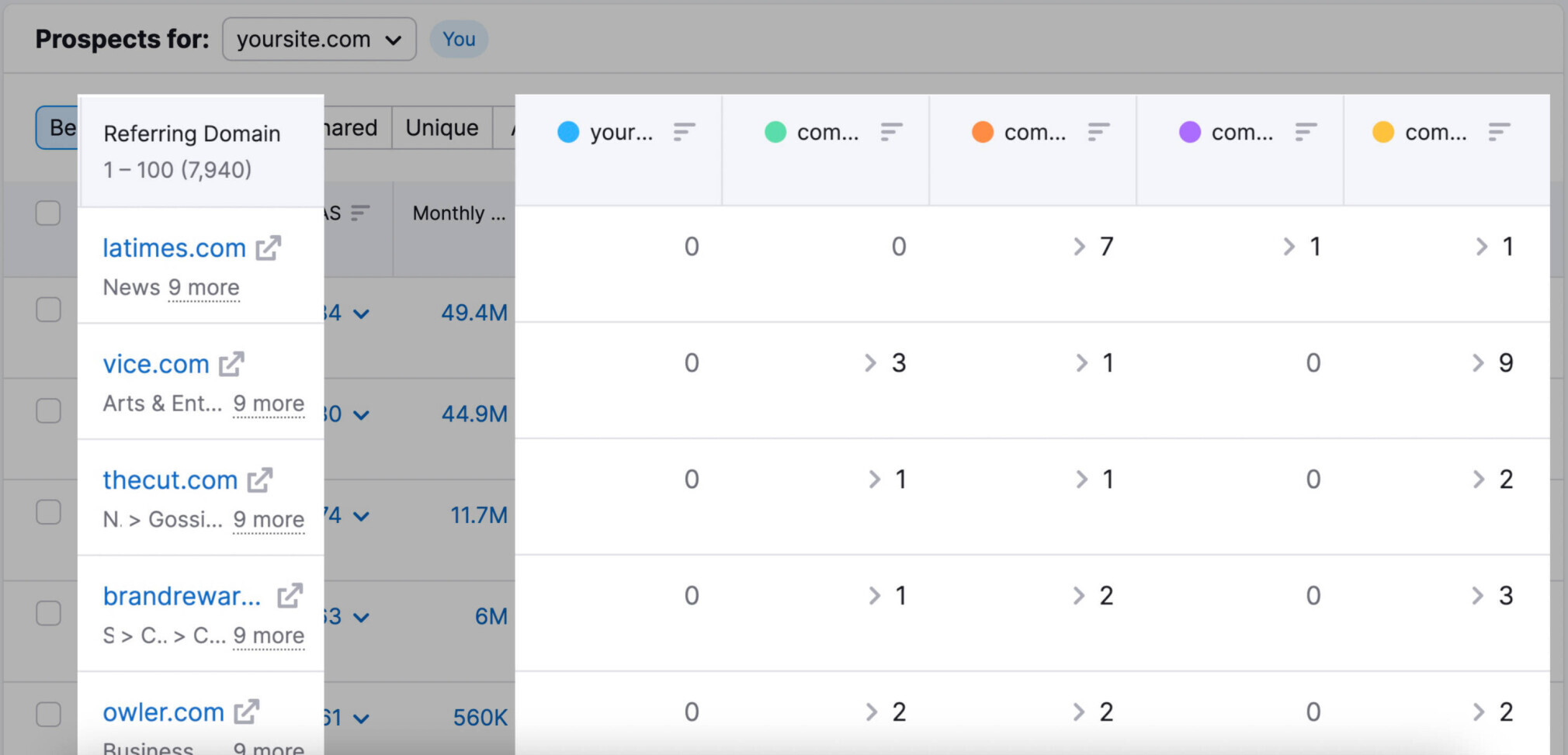
Click on the numbers to get more information about each backlink. Like which of your competitors’ pages it links to and what anchor text it uses.
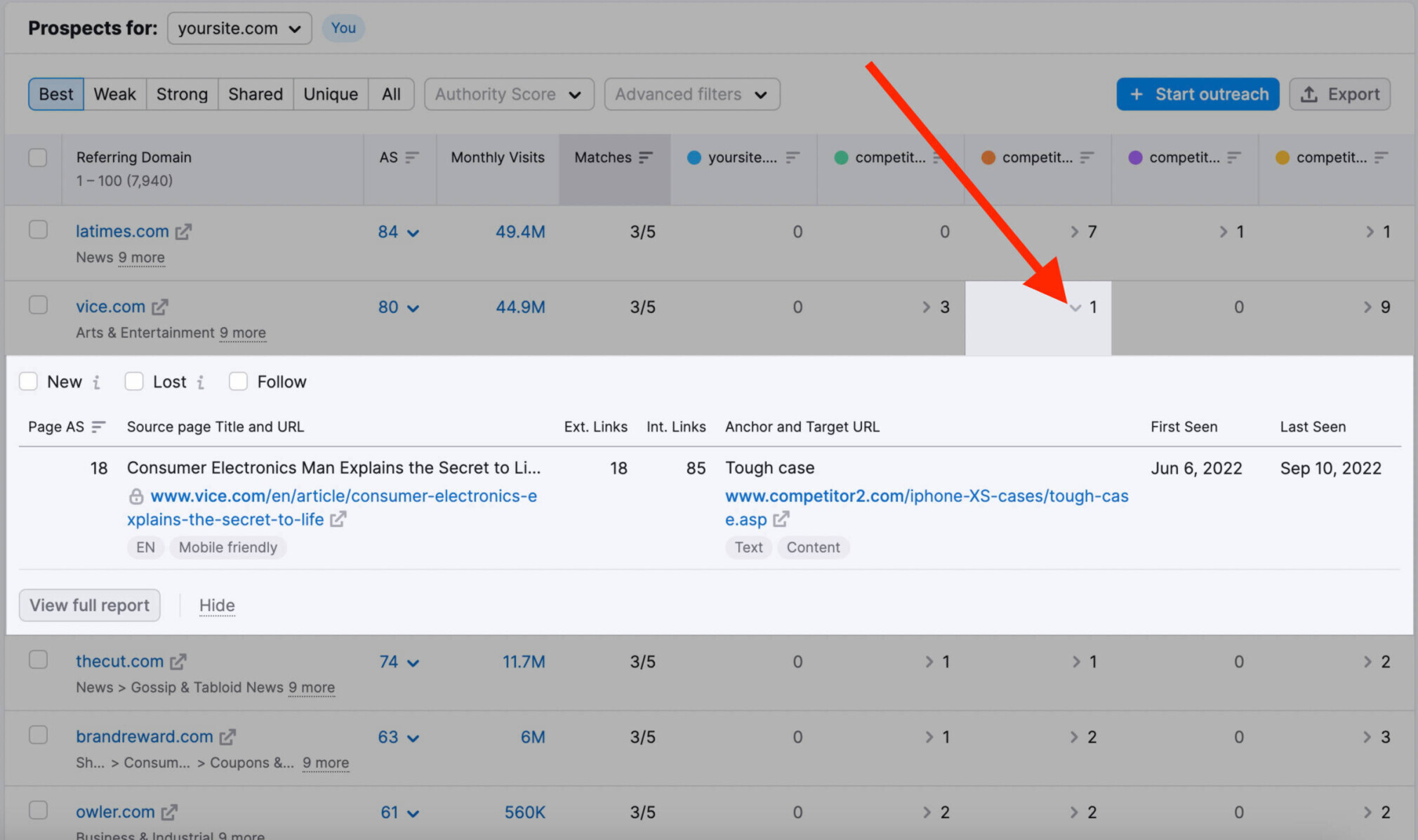
Use that information to gauge whether getting a backlink from that specific publication would be beneficial to your site.
After you’ve identified which publications you want to reach out to, use the Link Building Tool to keep track of your efforts.

